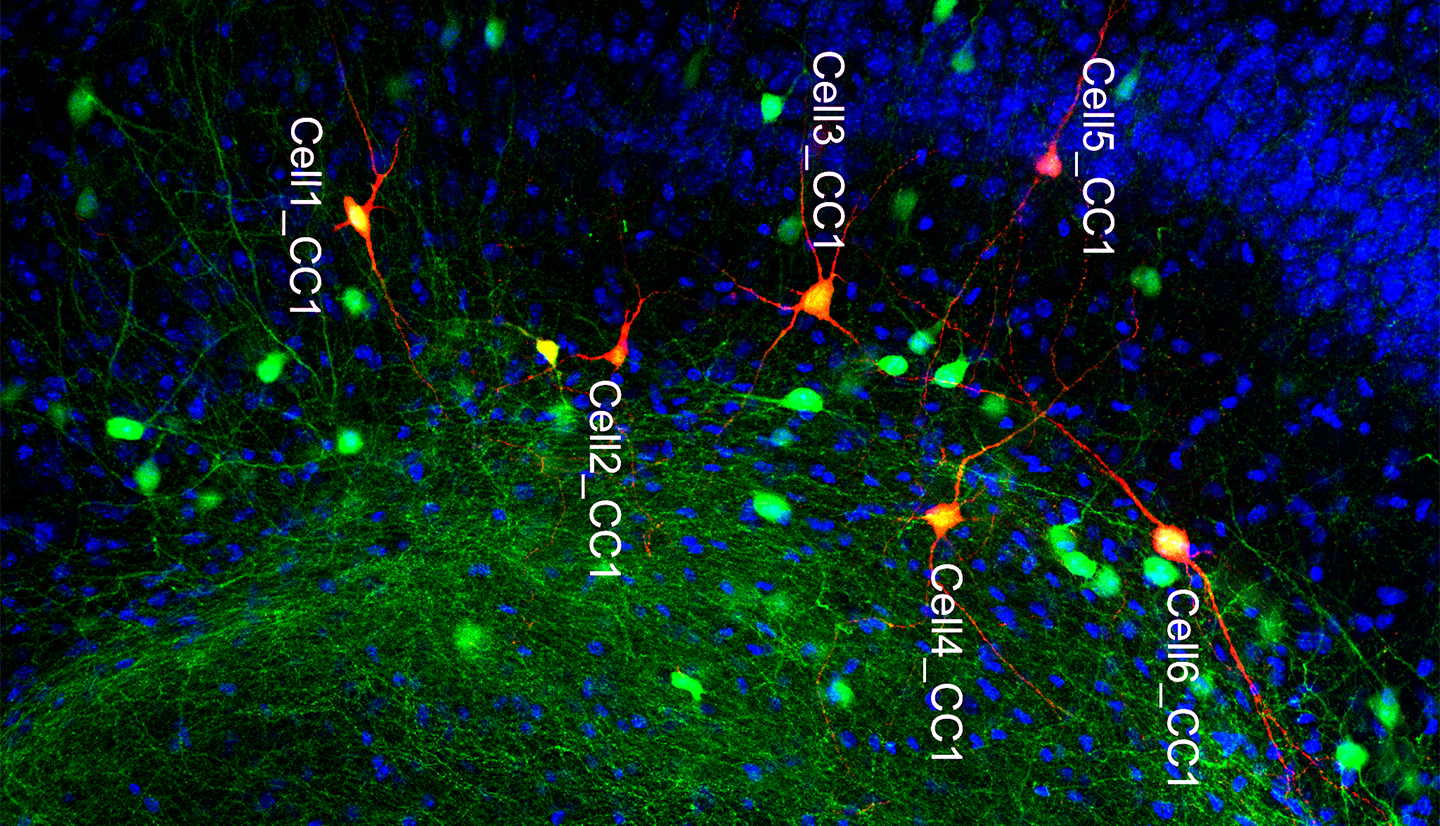Homeostatic plasticity in neural networks – stability drives functionality

Neural networks experience changes in their activity upon both physiological and pathological stimuli. To maintain a functional network state that enables flexible behavior, synaptic transmission and neuronal firing rates are interconnected through cell-autonomous negative feedback mechanisms. This is the concept of homeostatic synaptic plasticity, which is primarily investigated in our lab. Previous studies revealed the biological relevance of homeostatic plasticity in promoting experience-dependent plasticity as a prerequisite for flexible behavior. Therefore, pathology-driven changes in the ability for homeostatic plasticity expression might represent a hallmark for the development of clinical symptoms under various conditions, such as Alzheimer’s disease, traumatic CNS/PNS injury and neuroinflammation.
By investigating homeostatic synaptic plasticity in translational research approaches, we aim at providing insights in basic mechanisms that maintain functionality of the CNS and elucidate the role of maladaptive plasticity in disease pathogenesis.
Specifically, the following points will be addressed:
1) The traumatic loss of input to neural circuits in the central nervous system is frequently seen in clinical practice. Through pathway-specific lesions in tissue culture models – entorhino-hippocampal slice cultures – of laminated neural networks, we study molecular signaling pathways of lesion-induced plasticity and network reorganization. These findings will help to identify therapeutic targets that improve post-lesion network reorganization.
2) Sensory deprivation is a major trigger for homeostatic synaptic plasticity that drives neural network reorganization. In humans, age-dependent hearing decline is frequently observed. Although considerable network changes can be assumed, the synaptic effects on neocortical circuits in the human brain remain widely unknown. In a cross-disciplinary approach, we will elucidate how progressive hearing loss might interfere with cortical information processing across species, including humans.
3) The morphological complexity of neurons requires homeostatic plasticity expression at long distances from the soma, since it depends on de novo protein synthesis. Therefore, local protein synthesis in neurites has been established as a crucial prerequisite for synaptic plasticity. In our lab, we are studying the local regulation of local protein synthesis by retinoids, which regulate synaptic strength and promote ultrastructural reorganizations of synapses. Since retinoid metabolism represents a potential therapeutic target, the clinical potential of these signaling pathways will be evaluated.
In conclusion, this research focus will elucidate the driving or maintaining mechanisms of pathologies of the nervous system and thereby aims at enabling restorative strategies for regaining homeostasis in neural networks.
Key publications:
All-trans retinoic acid induces synaptic plasticity in human cortical neurons.
Lenz M, Kruse P, Eichler A, Straehle J, Beck J, Deller T, Vlachos A. Elife. 2021 Mar 30;10:e63026. doi: 10.7554/eLife.63026.
All-trans retinoic acid induces synaptopodin-dependent metaplasticity in mouse dentate granule cells. Lenz M, Eichler A, Kruse P, Muellerleile J, Deller T, Jedlicka P, Vlachos A. Elife. 2021 Nov 1;10:e71983. doi: 10.7554/eLife.71983.
Denervated mouse CA1 pyramidal neurons express homeostatic synaptic plasticity following entorhinal cortex lesion. Lenz M, Eichler A, Kruse P, Stöhr P, Kleidonas D, Galanis C, Lu H, Vlachos A. Front Mol Neurosci. 2023 Apr 12;16:1148219. doi: 10.3389/fnmol.2023.1148219. eCollection 2023.
Repetitive magnetic stimulation induces plasticity of inhibitory synapses. Lenz M, Galanis C, Müller-Dahlhaus F, Opitz A, Wierenga CJ, Szabó G, Ziemann U, Deller T, Funke K, Vlachos A. Nat Commun. 2016 Jan 8;7:10020. doi: 10.1038/ncomms10020.